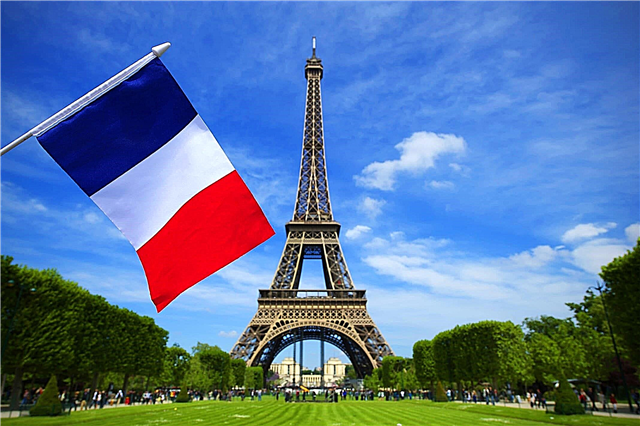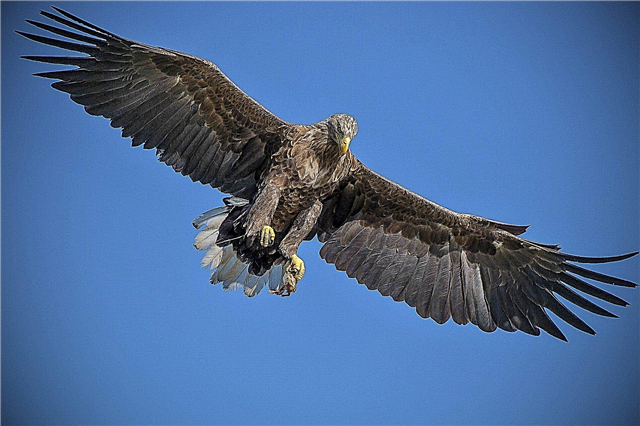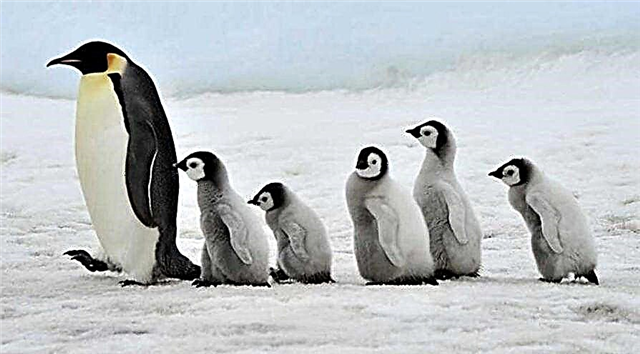
Africa, the second largest continent (after Asia), covers about one fifth of the entire earth’s surface. The continent is bounded in the west by the Atlantic Ocean, in the north by the Mediterranean Sea, in the east by the Red Sea and the Indian Ocean, and in the south by the mixed waters of the Atlantic and Indian Oceans.
The total area of Africa is approximately 30,365,000 square kilometers, and the length of the continent is about 8,000 km from north to south and about 7,400 km from east to west. In the northeast, Africa was connected to Asia by the Sinai Peninsula before the construction of the Suez Canal. Paradoxical as it may seem, the coastline of Africa with a length of 30,500 km is shorter than the European one, because the sunny continent has few bays.
The sunny continent can be described as a huge plateau, steeply rising from narrow coastal stripes and consisting of ancient crystalline rocks. The plateau is higher in the southeast and drops down to the northeast. Usually, scientists conditionally divide the plateau into its southeastern part and the northwestern part. The northwest includes the famous Sahara desert, the territory traditionally called the Maghrib sailors, and two mountain systems - the Atlas and Akhaggar mountains. The southeastern part of the plateau includes the Ethiopian plateau and the East African plateau.

Africa has a fairly wide range of climatic zones - equatorial climate, tropical climate with dry winters and rainy summers, monsoon climate, semi-arid climate, desert climate and oceanic climate.
Such rich geographical diversity gave rise to the great kingdom of living beings.
Why is Africa called that?
The continent, which got its name from the ancient Greeks from the word aprica, which means “sunny”, or from the Greek aphrike, meaning “without cold”, is divided almost in half by the equator, if we talk about the length. But due to the "bulge" of Africa in its northern part, a large territory is still located north of the equator.
Fauna of africa

The fauna of Africa, in the broader sense of the word, is all animals that live on the territory of the continent, islands and in the border seas. The most characteristic African fauna is found in the afrotropic ecological region. This region is almost completely located in the tropics, thereby creating favorable conditions for the richness of nature.
How did animals appear in Africa?
The very first traces of the formation of fauna in Africa date back to the early days of the existence of any life in general on our planet. But it is worth noting that the formation of nature in the form in which we see it now, approximately refers to the times of the splitting of the Gondwan supercontinent in the era of the middle of the Mesozoic.
The formation of the fauna was largely due to various migrations of animals between the ancient continents of Godwana - Madagascar, South America and, possibly, India. But the largest stream went to and from Laurasia. If we talk about the continents of Godwana, then the migration occurred mainly unilaterally - from Africa, while exchanges with Laurasia were numerous and bidirectional, although mainly from Laurasia to Africa.

The first exchange of the Neogene fauna occurred in the Middle Miocene. The main exchange of terrestrial fauna between North Africa and Europe began about 6.1 million years ago, about 0.4 million years before the Messina peak of salinity.
During the beginning of the tertiary period, Africa is covered by a vast evergreen forest inhabited by endemic forest fauna with many species characteristic of southern Asia. In the Pliocene, the climate became dry, and most of the forest was destroyed, forest animals found refuge on the remaining forest islands.
At the same time, a wide land bridge connected Africa to Asia and there was a large invasion of animals of the steppe fauna in Africa.At the beginning of the Pleistocene, a wet period began, and most of the forest was restored, while the fauna of the savannah was fragmented and limited to small areas, as previously there was a forest. The almost complete isolation of Africa from other regions led to the close kinship of many species in different corners of the continent.
Mammals
Africa has sheltered 1,100 species of mammals in its lands. A large number of rodents live on the sunny continent. 64 species of primates live here, the largest number of species of ungulates and bovids. This is a real animal kingdom, which for centuries has attracted adventure lovers from around the world who want to compete with the power of nature itself.
A lion

Leo is the “king of all animals.” A huge feline, reaching a length of 208 centimeters, and weigh up to 170 kilograms. Females are slightly less modest in size - up to 184 centimeters and 138 kilograms.
The lion is muscular, with a deep chest and a short rounded head, a reduced neck and round ears. Its fur varies in color from light brown to silver gray, yellowish red and dark brown. The colors of the lower parts are usually lighter. The newborn lion has dark spots that disappear when the cub reaches adulthood, although weak spots can often still be seen on the legs and lower parts of the body.
Leo is the only member of the cat family, in which males are significantly the largest females. Males have wider heads and a noticeable mane that grows down and back, covering most of the head, neck, shoulders and chest. The mane is usually brownish with a touch of yellow, rusty and black hairs
Rhinoceros

Members of the rhinoceros family are among the largest remaining representatives of the fauna, and all species can reach or exceed one ton of weight. They are herbivores, have a rather small brain for their size (400–600 g), one or two horns and a thick (1.5–5 cm) protective skin formed from layers of collagen consisting of a lattice structure.
Typically, they eat leaves, although their ability to ferment food in the intestine allows them to eat more fibrous plant matter if necessary. Unlike other unpaired, two African rhinoceros species have no teeth in the front of the mouth, instead they rely on their lips to grab food.
Rhinos often fall prey to poachers who hunt for their horns - they can be sold for big money on the black market. Some cultures have widely used horns for medicinal purposes, as well as to create jewelry.
Giraffe

Giraffe is the highest mammal of the planet. Giraffes once inhabited the entire continent, but now their range has declined sharply due to the activities of poachers and the destruction of their natural habitat. A long neck allows the animal to reach the freshest leaves, lives in arid savannahs south of the Sahara.
Zebra

Zebras are several species of African equestrian animals (family of horses), united by characteristic black and white striped fur. Their stripes come in different types, the color of each individual is unique, such as, for example, fingerprints of human fingers. As a rule, these are social animals that live from small harems to large herds. Unlike their closest relatives, horses and donkeys, zebras have never been domesticated.
Unique stripes have become the hallmark of zebras, which makes them one of the most recognizable species of animals. Striped horses live in a wide area - from meadows and savannahs to forests and mountains. Various anthropogenic factors have had a major impact on zebra populations, in particular skinning and habitat destruction.
Hippo

The common hippo, or hippopotamus, is a large, mainly herbivorous, semi-aquatic, artiodactyl mammal and ungulate living in sub-Saharan Africa.This is one of two existing species in the Hippopotamidae family, the other is a pygmy hippopotamus.
The name comes from the ancient Greek “river horse” (ἱπποπόταμος). After the elephant and rhinoceros, the common hippopotamus is the third largest species of terrestrial mammals and the most severe of the existing artiodactyls. Despite their physical resemblance to pigs and other terrestrial ungulates, the closest living relatives of hippos are cetaceans (whales, dolphins, porpoises, etc.), from which they descended about 55 million years ago.
Interesting fact: Hippos are Africa’s most dangerous animals. Its size, incredible speed and strength become a serious threat to those who enter its territory.
Chimpanzee

Two species belong to chimpanzees - ordinary chimpanzee and bonobo. The chimpanzee is covered with coarse black hair, but has a bare face, fingers, toes, palms and soles of the feet. The common chimpanzee is larger and stronger than the bonobo, reaching a weight of 60 kilograms. The chimpanzee's gestation period is 8 months, while the baby is opened from the breast at 8 months, but the cub’s close relationship with the mother will continue for several more years. Usually live in groups of 15 to 150 individuals. There is a rigid hierarchy of males in groups, but disputes are usually resolved without the use of physical violence.
Chimpanzees are the closest relative of humans - 98% of the genes match!
Interesting fact: All groups of chimpanzees that have ever been studied by scientists, used for their own benefit improvised items - sticks, stones, grass, leaves - and thoughtfully used them in the hunting process.
Birds
More than 2,600 species of birds live in Africa (permanently or temporarily), 1,500 of which belong to the order Passeriformes. 114 species of African birds are threatened with extinction. The great wealth of the bird kingdom is one of the visiting cards of the continent: Africa offers to listen to countless songbird species, enjoy the view of colorful parrots, and here you can even look at penguins!
African white-crested kalao

White-headed kalao is a species of rhinoceros bird, distinguished by its white tail, neck and chest. They live in the humid forests of Central and West Africa.
The size of the average individual usually varies from 83 to 102 centimeters, and the weight is approximately around one and a half kilograms. Females, in turn, are smaller than males.
African brilliant teal

African brilliant teal is an African species of duck that is common in sub-Saharan Africa. It is the smallest duck species in Africa and one of the smallest in the world.
Although the beak of brilliant teal is more reminiscent of a goose, they are still akin to ducks. The weight of these ducks reaches only 285 grams with a wingspan of 165 millimeters. The beak continues to the forehead, therefore, outwardly they look like geese. Brilliant teal feed mainly on the seeds of water lilies and other seeds floating on the surface of water bodies, as well as insects. They have strong family ties, so one pair of ducks can be seen together from year to year. In captivity, breeding is almost impossible.
African vulture

African vulture, aka Griffon vulture with feathers on the neck and head. The bird is of impressive size - body weight varies from 4 to 7 kilograms, but the wingspan of some representatives of the species reaches 2.25 meters. Like other vultures, the African vulture is a scavenger. Vulture nests on trees in savannahs in West, East and South Africa. Lay one egg at a time.
Interesting fact: Vultures are Africa's main “consumers”. It was estimated that only 36% of the total mass of dead animals goes to terrestrial predators, while the most part are eaten by voracious vultures.
African penguin

An African penguin or a spectacled penguin, like all other members of the family, cannot fly.They are small in size - adults reach only 70 centimeters and weigh up to 5 kilograms. Color black on the back and white in front.
The African penguin is a skilled hunter who uses his excellent swimming skills in hunting for fish, which is the main diet of the bird. Penguins annually attract many tourists.
Wavy Astrild

The wavy astrild is a small bird, a representative of the Passeriformes, and belongs to the family of finches. The bird has a wide habitat - sub-Saharan Africa can be found almost everywhere.
Astrild does not grow more than 13 centimeters and weighs an average of 10 grams. He has a slender body with short rounded wings and a long tail. The plumage is mostly gray-brown, with small touches of dark brown. A red streak passes through the eyes, and the cheeks and throat are whitish. Females are similar to males, but paler, on the stomach less red.
Ordinary Public Weaver

This small bird, growing up to 14 centimeters, weighs a maximum of 32 grams. It has a black chin, black stripes on the sides and back with black dots. Sex by color cannot be determined.
They live in the savannahs of South Africa. Birds are social - live in large common nests. This behavior is rarely seen among birds. Their nests are real masterpieces of architecture in nature.
Fishes
Africa has the richest variety of freshwater fish in the world - There are more than 3,000 species. The East African Great Lakes - Victoria, Malawi and Tanganyika - are the center of the biological diversity of many species of fish, especially cichlids (they are inhabited by more than 2/3 of the family of more than 2,000 species). The West African coastal river region covers only a small part of West Africa, but it is home to 322 species, 247 of which live here only, and 129 of them live in small areas of this territory. The rivers of the central part of the continent are inhabited by 194 species of fish. If we talk about marine fish, the Indian coast has the richest variety of them - about 2,000 species.
Protopter

Protopter - elongated, eel-like fish, with filiform pectoral and pelvic fins. They have soft scales, and the dorsal and caudal fins are merged into a single structure. They can either swim like eels or crawl along the bottom using their pectoral and pelvic fins. The largest individuals reach about 200 cm in length.
These fish live in shallow water. Protopters are double-breathing fish, which allows them to live without water for many months in burrows from hardened mud under a dried stream. Younger individuals prefer to use the gills for breathing, receiving 90 percent of the oxygen this way, but mature fish use the lungs more often, leaving only 2 percent of the oxygen for the gills.
Big tiger fish

This is a very large species of freshwater predatory fish. You can find tiger fish in the basin of the Congo River and in Lake Taganyika. The species has large teeth, the body can reach 1.5 meters in length and weigh up to 50 kilograms.
In Congo, a number of incidents related to the attack of this fish on humans have been recorded. This reputation, combined with physical strength, brought the fish an almost mythical status among fishermen, and it was called the “greatest freshwater fish in the world.” According to locals living by the river, the evil spirit of “Mbenga” penetrates the fish and forces it to attack of people.
Kalamoicht

Kalamoicht is often called snake fish due to its appearance. Distributed in Central and West Africa. In addition to the gills, the species has a pair of lungs, which allows it to survive in very oxygen-poor water. The view reaches a maximum of 37 centimeters, the long dorsal fin consists of a series of divided spines, each of which supports one or more articulated rays and a membrane.
Kalamoicht is threatened with habitat loss due to palm oil plantations and other agriculture, as well as deforestation and urban development.
Senegalese multiper

This fish has an elongated body, which is usually gray or beige in color, sometimes there are white, pink or blue shades on the scales. Most fish are covered in subtle patterns with occasional dark spots. The body is long and slightly cylindrical in shape, a serrated posterior fin passes through the entire body, connecting with the caudal fin. The fish has a pair of primitive lungs instead of a swimming bladder, which allows it to periodically swallow air from the surface of the water.
In active hours, the multipurpose prefers to move, doing hunting, feeding, researching and cleaning garbage from its habitat. Social behavior was also found in multi-player groups. They are usually inactive at night and are in a state of rest.
Invertebrates
At the moment, there are large gaps in knowledge about the invertebrates of the African continent.
East Africa has a rich coral fauna, numbering about 400 known species. There are also more than 400 species of echinoderms and 500 species of bryozoans, as well as one species of Cubomedusa (Carybdea alata).

East African lakes are home to a large number of freshwater mollusks. Sea snails are found on the Atlantic coast, but in much greater diversity in the region of the western Indian Ocean. On the continent, 156 species of tardigrades and more than 8,000 arachnids were found.
The underground life of tropical regions of Africa is little studied by scientists. Several environmental studies of macro-fauna have been conducted, but mainly in West Africa. Earthworms are widely studied only in West and South Africa.
Insects of africa
About 100,000 insect species have been described in sub-Saharan Africa, but fundamental systematic analyzes insect fauna on the solar continent was not conducted.
In Africa, there are about 875 species of dragonflies. Also there is the largest variety of termites - more than 1,000 species. More than 17,000 species of dipterans have been discovered on the solar continent for all the time of research. More than 1,700 species of bees and 2,000 species of ants live in Africa. Here you will find 3,607 species of butterflies. There is no need to talk about a large number of bugs, some legends are composed about some of them - for example, Manticore, Goliath Beetles and Scarabs.
Interesting fact: It has been estimated that African insects make up about 20% of the total number of insects on the planet. And about 15% of new species are discovered annually in the African tropics.
Goliath beetle

The goliath beetle is a species of very large beetles. Representatives of this species are considered the heaviest insects in the world, the weight of individual individuals can reach up to 100 grams! The most typical color of goliaths is for females - brown, black and white; and for males - from dark brown to white. These bugs live mainly in the tropical forests of Africa, where they feed on bark, tree juices and fruits.
Stenocara gracilipes

An interesting species of beetles that lives in one of the most arid regions of the world - in the Namib desert. Although only 1.4 cm of precipitation falls annually in this region, Stenocara gracilipes is perfectly adapted to such harsh conditions - its relief body is able to collect water droplets from morning fogs. Then the collected water flows down his body to the mouth opening. In recent studies, it was found that these beetles are able to receive water without fogs, but only from humid air.
Malaria mosquito

Malaria mosquitoes are a genus of dipteran insects extremely dangerous for humans. Many representatives of this species carry life-threatening parasites - malarial plasmodia. The insect eats blood. Lays in huge quantities eggs in stagnant waters.From only one place can millions of new individuals be born.
Ant Dorylus

This species of ants is one of the representatives of the so-called group of “Military ants” and “Nomads ants”. They got their first name for the particular aggressiveness they show when they search for food, occupying large areas in huge numbers. They have the characteristic property of constant migration. Their colonies are overwhelming by the number of individuals - they can reach 20 million ants!
Tsetse fly

Tsetse - large biting flies that inhabit almost the entire part of tropical Africa. Tsetse is a parasite that feeds on the blood of vertebrates. These flies have been very well studied because of their role in the spread of diseases on the continent. They suffer from sleeping sickness. Tsetse is perennial and long-living insects, usually produces about four broods per year and up to 31 broods throughout life.
Spiders of africa
Africa is home to a huge number of species of spiders. Most of them, although it seems scary, pose no threat to humans. But not everyone is so friendly - there are a number of extremely poisonous and aggressive spiders that are best avoided.
Black Widow

Representatives of the species vary greatly in size. In most cases, females are dark in color, but some may have lighter bodies or even reddish ones. Many individuals may have red, white or brown markings on the upper side (back) of the trunk. Some can be easily identified by reddish markings on the central lower abdominal cavity; they often take the form of an hourglass.
The poison of these spiders is dangerous to humans and requires emergency medical attention. The bite of a black widow can be fatal for children or adults with poor health, although in most cases, the mass of an adult is enough to sufficiently reduce the concentration of poison to escape from death. Besides the immediate danger posed by poison, bites are incredibly painful.
Interesting fact: a black widow during the summer can leave from 4 to 9 cocoons, and lays from 20 to 600 eggs. But, like adults, cubs are cannibals and eat each other in a cocoon, so a modest number of spiders hatch.
Baboon spider

This is a slowly growing species of tarantulas, the size of which can reach 20 centimeters in terms of leg span. Baboons spiders are often rusty brown or orange. Lives in holes, so the hind limbs are made for digging, which is why they are thick and incredibly powerful. This species is very popular among collectors, but is extremely aggressive, so it is not suitable for amateurs and beginners. It has a strong poison that causes severe pain. The bite of an immature spider can cause a lot of discomfort, and itching at the site of the bite will continue for five days.
Deinopids

Deinopids have rod-shaped elongated bodies. They catch prey by stretching the web on their forepaws and in this position move forward. Spiders have excellent night vision, which allows spiders to accurately cast their networks on victims. Two eyes are large in size, so sometimes it seems that deinopids are two-eyed. Ogres resemble their appearance, therefore, in the literature there is also another name for these packs - spider-ogre.
Six-eyed sand spider

A six-eyed sand spider is a poisonous species of spiders whose bites can lead to necrosis. The spider is not huge in size, reaching only 50 mm in length. So far, there has not been a single recorded case of an attack on a person - only one experiment was conducted, during which a rabbit was bitten. The rabbit had a lethal outcome after 5 hours.
Spider darwin

This is a weaver spider that creates the largest of the known round cobwebs - they can reach from 900 to 28,000 square centimeters, and bridge lines can reach up to 25 meters.The spider was first discovered in Madagascar in 2009. Its web is the toughest biological material that has ever been studied by experts, it is ten times stronger than a piece of Kevlar of the same size. The name was chosen due to the publication of the description of the spider on the 150th anniversary of the great work of Darwin's “Origin of species”.
Amphibians of Africa
Africa has a wealth of amphibians, most of which live only on this continent. If we take Madagascar separately, then only 238 species live on it, which cannot be found anywhere else in the world.
But with such wealth, the amphibians of the solar continent have many threats - according to the Global Amphibian Assessment, more than 50% of African representatives are at risk of extinction. 130 of them are in critical danger of being wiped off the face of the earth.
Hairy frog

A hairy frog is often referred to in the literature as a terrible frog or a wolverine frog. It lives in Central Africa. Representatives of this species usually reach 11 centimeters, the head is rather wide rather than long with a rounded muzzle. Males are much larger than females. Adult males develop - hair-like - skin growths that extend along the sides and thighs. They contain arteries and are thought to increase the surface area of the body in order to absorb more oxygen, which is useful because the male stays with the eggs for a long period of time after they are laid in the water by the female.
Interesting fact: In Cameroon, hairy frogs are often eaten by local people. Some tribes believe that frogs fall from the sky, and eating them can help childless couples finally have a baby.
Goliath Frog

The goliath frog is the largest frog species in the world. Individuals can reach 33 centimeters in length and weigh up to 3.25 kilograms. The range is relatively small - live in Cameroon and Equatorial Guinea. Goliaths live in fast rivers with a sandy bottom, the water of which is saturated with oxygen. Rivers inhabited by frogs are usually found in tropical regions with high temperatures. The number is constantly declining due to the destruction of the natural habitat.
Digging frog

The range is quite wide, the frog inhabits the territory of Angola, Botswana, Kenya, Malawi, Mozambique, Namibia, South Africa, Swaziland, Tanzania, Zambia, Zimbabwe and the Democratic Republic of the Congo. It lives mainly in arid savannahs.
The size of the representatives is impressive - males weigh on average up to one and a half kilograms, but individual individuals were recorded, reaching a mass of more than 2 kilograms.
A digging frog is an insatiable predator, which is content with eating insects, small rodents, reptiles, small birds and other frogs. This species sometimes eats tadpoles, which it must guard. They make a loud croaking and bleating sound under stress. This is one type of frog that has sharp teeth and can bite people when they are provoked or mistreated.
Interesting fact: The African digging frog, which was kept at the Pretoria Zoo in South Africa, once ate 17 young cobras.
Reptiles of Africa
Africa is also rich in reptiles. The center of the diversity of chameleons is considered Madagascar. On the mainland, there are many species of snakes and lizards. There are 12 genera and 58 species of African dows. Africa is also considered home to a number of turtles and three species of crocodiles.
African narrow-crocodile

This is one of the three species of crocodiles living in Africa. The view is in critical danger. The African narrow-toed crocodile has a very long and straight face, which it uses to fish. Their size is not very large - they reach 325 kilograms, and 4.2 meters in length. They prefer to live in dense, vegetable ponds. They live in Central and West Africa.
Chameleon

More than 202 species of chameleons for 2015 were discovered in the world. The natural color differs from species to species, but the most interesting ability of this reptile is the ability to change color for its own protection, to remain invisible to the predator, merging with the environment.
Chameleons are distinguished by their incredibly developed and perfected languages, which have the ability of a sharp throw used for hunting. The eyes of the reptile are independent of each other, which greatly expands the view of the animal. They provide stereoscopic vision.
The chameleons on the island of Madagascar are most clearly represented. There they can be found in grass, fallen leaves and dry branches.
Black Mamba

The black mamba is a highly poisonous snake that lives only in the vastness of Africa, in the territories south of the Sahara desert. This is the second largest poisonous snake in the world (the first is a king cobra). The snake, as a rule, reaches a length of up to 3 meters, although there have been recorded cases of caught black mambas up to 4.5 meters in length. Young snakes have a light color, which darkens with their maturation.
This species is both terrestrial and arboreal (living on trees), snakes can be found in the savannah, woodland, rocky slopes, and in some regions in dense forests. The black mamba is a day hunter and, as you know, preys on birds and small mammals. Above convenient for itself surfaces the snake can move at a speed of up to 16 km / h. Adult black mambas have few natural adversaries in nature.
Interesting fact: Unlike boas, which digest prey for whole months, the black mamba does this for 7 hours. Then - again crawls out to hunt.
Spurred tortoise

A spurred tortoise is a reptile that lives on the southern edge of the Sahara desert in Africa. This is the third largest tortoise species in the world, the largest species of mainland tortoise and the only surviving species in the genus Centrochelys.
The turtle can reach 83 centimeters in length and weigh 105 kilograms. They live up to 70 years. Spurred turtles are herbivores. First of all, their diet consists of many types of herbs and plants, high in fiber and very low in protein. Flowers and other plants, including cactus pads, are often eaten.












